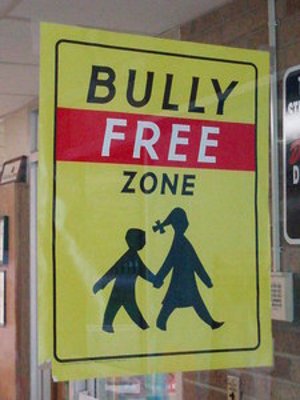Bullying use to be something that kids encountered in school. Today there are many different types of bullying that are affecting kids in and out of the school environment. Technology has allowed kids to bully in many different ways including online and through text messages.
Physical Bullying
Physical bullies will use force such as hitting, kicking, pushing, scratching and even property destruction against their victims. The physical attacks may become worse if they are allowed to continue without an adult intervening.
Emotional Bullying
Emotional bullies use name calling and degrading remarks to intimidate their victims. They often pick on kids that are deemed to be different by all the other kids. Kids that are seen as loners may be easy targets for these bullies because they have no one to back them up or take up for them.
Cyber Bullying
Cyber bullying has been on the increase for the past few years. According to Dosomething.org, nearly 35% of kids have been threatened online and almost one in five have had it happen more than once. Cyber bullies use social networks, e-mails, websites and chat rooms to threaten and degrade their victims. School end each day and kids can go home to escape a bully, but the internet is available 24 hours a day so the bullying can go on and on indefinitely.
Text Bullying
Cell phones have become a big part of many kid’s lives. Bullies are now using text messaging to threaten and humiliate their victims.
Relational Bullying
Bullies often convince their peers to ignore and reject the victim of the bullying. This makes the child feel rejected by all their peers.
Bystander Bullying
Bystander bullying is kind of a mob mentality. The main bully starts the encounter and then those around join in or stand by without doing anything to help the person that is being bullied. The bystander may fear retaliation if they try to step in and protect the victim.
Signs of Bullying
Parents and teachers need to be vigilante in watching for the signs of bullying. Some of the signs of bullying can include:
* Often being sick in the mornings to keep from going to school
* Come home with frequent bruises or scratches
* Come home hungry because the bully took their lunch or lunch money
* Become withdrawn
* Lose confidence
* Have low self-esteem
* Have torn clothes or damaged books
* Sudden drop in their grades
* Have nightmares
* Start losing their possessions
* Not want to talk about what is wrong
* Become depressed or suicidal
If you notice any of these signs of bullying in your child or students, try to get them to talk to you about what is going on. Assure them that it is going to be all right and that you will help them resolve the situation. They may not want you going to the school or making a big deal about because other students may call them a snitch or they may fear that the bullying will get worse. The effects of bullying can last for a long time, so put a stop to it as soon as you possibly can.
Sources:
http://www.dosomething.org/tipsandtools/11-facts-about-cyber-bullying
http://doe.sd.gov/oatq/docs/Bullying_in_Schools.doc
http://www.kidscape.org.uk/parents/signsof.shtml



